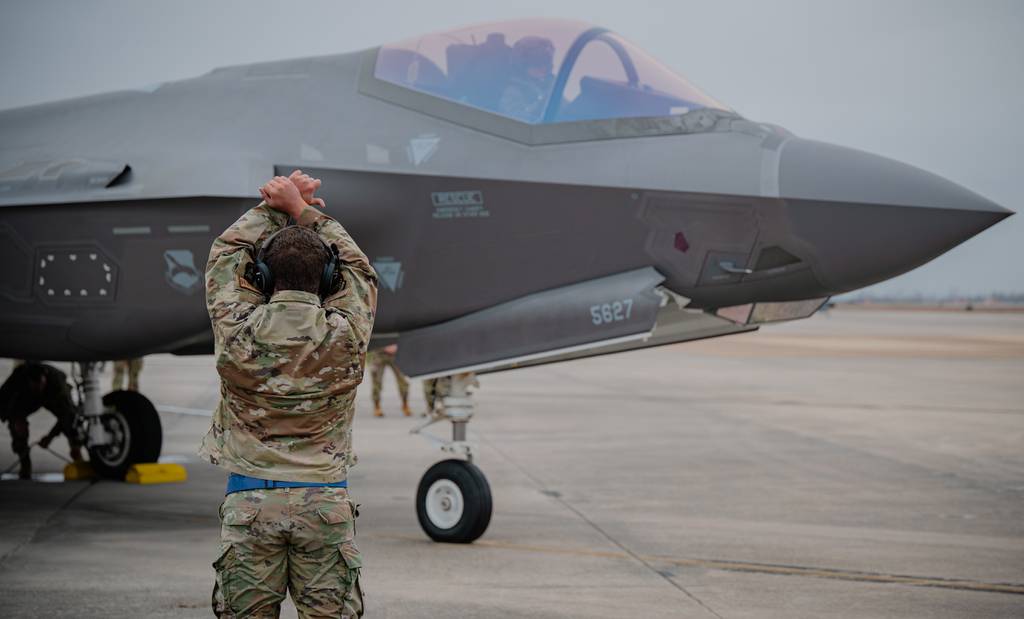
The F-35 Joint Strike Fighter’s total cost is expected to top $2 trillion over its entire life span given the U.S. military plans to fly it longer, inflation is rising, and the Pentagon’s efforts to rein in expenses are largely falling short, a government watchdog said Monday.
That price tag represents an increase from the $1.7 trillion lifetime cost the Government Accountability Office previously reported in September 2023. The revised estimate includes nearly $1.6 trillion in sustainment costs — a 44% increase from the $1.1 trillion sustainment price tag estimated in 2018 — and about $442 billion in acquisition costs, including development and procurement of the Lockheed Martin-made jet.
In the new report to lawmakers, GAO said the Defense Department now plans to fly the F-35 through 2088, 11 years longer than services most recently anticipated.
That longer projected life span is part of the reason the F-35′s total price tag will now top $2 trillion, GAO said — but it’s not the only reason.
Rising inflation is a major factor driving up the cost of flying the F-35, GAO said. And while the F-35 program has made attempts to bring costs back down, the report noted those efforts have had only limited success.
In a statement to Defense News, the F-35 Joint Program Office pointed to steps it took to rein in costs for the fighter.
“We have continued to reduce sustainment costs through growth and maturation of the F-35 enterprise, including JPO product support manager efforts to drive down contract costs, better alignment of U.S. services’ requirements and budgets, and an active cost reduction initiative pipeline,” the F-35 Joint Program Office said.
Those cost-control measures have cut the annual cost per tail by about a third between 2014 and 2022, from $9.4 million to $6.2 million, the JPO said, and it cut the jet’s cost per flying hour from $86,800 to $33,600, in 2012 dollars.
Most F-35s flown by U.S. services — including the Air Force’s F-35A, the Marine Corps’ F-35B and the Navy’s F-35C — are coming in under their current annual cost estimates to operate and sustain the jets, GAO said.
The Air Force is now spending $6.6 million each year to operate and sustain the average F-35A. That’s a shade under the $6.8 million the service now has budgeted to fly each jet annually — but well over the original goal of $4.1 million.
F-35Bs are also costing about $700 million less apiece to fly than expected, and operating and sustainment costs for Navy F-35Cs are $1.7 million less than the target.
The Marine Corps’ F-35Cs, however, have annual costs of $8.6 million — $1.8 million more than anticipated.
The reason services are making progress toward meeting their affordability targets is partly because projected flying hours have been reduced, GAO said.
In 2020, the JPO expected the F-35 fleet would fly more than 382,000 hours per year by the mid-2030s. But that estimate has now dropped to a little more than 300,000 hours per year, GAO said, due to lower-than-expected use of the F-35 so far and revised estimates about how much it will be flown in the future.
The Pentagon took steps over the last decade to reduce the F-35′s costs, including working with contractors to find savings, restructuring the JPO to bring down fleet expenses and setting up an initiative called the “war on cost.” That last effort includes taking steps to improve the reliability and maintainability of parts on the jet, reducing incidents of foreign object debris entering and damaging the engine, and improving engines’ reliability and availability so they can stay in a jet longer.
But while those steps could save about $84 billion over the lifetime of the F-35 program, Pentagon officials told GAO “these efforts will not fundamentally change the [F-35′s] estimated lifetime sustainment costs.”
Planned upgrades to the F-35 — particularly a program to modernize its Pratt & Whitney-made F135 engines to deliver more power and cooling ability — could help bring down the jets’ costs, GAO said. But the F-35 program’s decision to hold off on starting some of those upgrades led it to missed opportunities that could have reduced sustainment expenses.
Meanwhile, the F-35 is still far from meeting the program’s goals for aircraft availability, GAO said. Mission-capable rates for F-35As fell to 52% in 2023, well below the minimum target of having 80% of jets available to carry out all its missions at any particular time.
“B” and “C” variants were at nearly 60% and 62%, respectively, also below their minimum mission-capable rate goal of 75%. No version of the F-35 met its performance goals over the past five years, GAO said.
But the program has either met or is close to meeting 17 of its 24 goals for having jets available for operations and not out of service for maintenance, GAO said.
The report noted the F-35 program is still facing several challenges that harm the jets’ readiness, including a heavy reliance on contractors, inadequate training, a lack of spare parts and support equipment, and a lack of technical data that could help the military perform its own sustainment work on the jets.
Author: Stephen Losey
Source: DefenseNews



